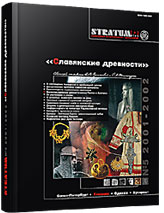О значении зольников на поселениях хазарского времени в бассейне Дона
On the Meaning of Zolniks on Settlements of Khazar Time in the Basin of the Don
Author(s): Svetlana A. PletnevaSubject(s): History, Archaeology, Middle Ages, 6th to 12th Centuries
Published by: Издательский дом Stratum, Университет «Высшая антропологическая школа»
Summary/Abstract: The article is dedicated to such a scarcely studied category of archaeological objects as zolniks or ‘ash spots’. I.P. Rusanova distinguished 6 features; taken together, they enable a characterisation of zolniks as objects of cult. Similar sites are met in the Bronze age, in the Scythian time and during the early Middle Ages. While zolniks of the Bronze Age were studied by S.S. Berezanskaya, the Scythian ones – by I.P Rusanova, for the Medieval period there has been no systematic examination of this group of sites. The settlements with zolniks are found in the basin of the Don as forest-steppe and steppe versions of the Saltov-Mayatskaya culture. Judging by the most typical sites with zolniks, the author draws a conclusion that zolniks were typical for large permanent settlements and are never met on small ones or on what remains of nomads’ camps. The main mass of ash in the mounds comes from regularly cleaned hearths, which played a critical role in religion of all peoples in the world. The ancient cults of fire and hearth have been dominating in the spiritual life of man since the early antiquity. The ash-pits on settlements, most likely, played the role of independent shrines and had no link to other kinds of shrines.
Journal: Stratum plus. Археология и культурная антропология
- Issue Year: 2002
- Issue No: 5
- Page Range: 264-269
- Page Count: 6
- Language: Russian
- Content File-PDF

